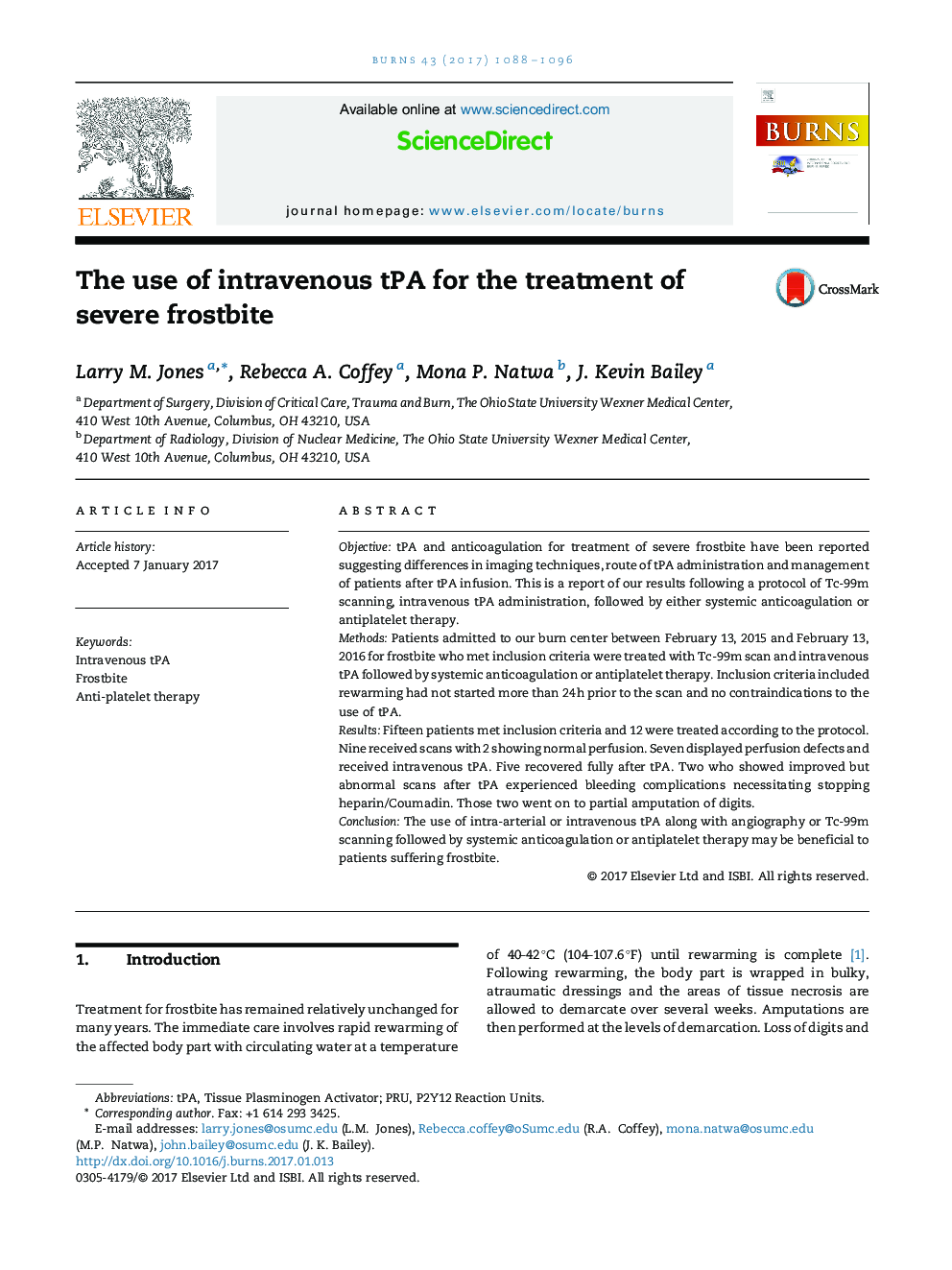| Article ID | Journal | Published Year | Pages | File Type |
|---|---|---|---|---|
| 5636164 | Burns | 2017 | 9 Pages |
â¢Intravenous tPA has a role in the treatment of severe frostbite.â¢Consider anti-platelet therapy for patients in whom Coumadin is contra-indicated.â¢Protocol for IV tPA and anti-platelet therapy from one institution is reviewed.
ObjectivetPA and anticoagulation for treatment of severe frostbite have been reported suggesting differences in imaging techniques, route of tPA administration and management of patients after tPA infusion. This is a report of our results following a protocol of Tc-99m scanning, intravenous tPA administration, followed by either systemic anticoagulation or antiplatelet therapy.MethodsPatients admitted to our burn center between February 13, 2015 and February 13, 2016 for frostbite who met inclusion criteria were treated with Tc-99m scan and intravenous tPA followed by systemic anticoagulation or antiplatelet therapy. Inclusion criteria included rewarming had not started more than 24Â h prior to the scan and no contraindications to the use of tPA.ResultsFifteen patients met inclusion criteria and 12 were treated according to the protocol. Nine received scans with 2 showing normal perfusion. Seven displayed perfusion defects and received intravenous tPA. Five recovered fully after tPA. Two who showed improved but abnormal scans after tPA experienced bleeding complications necessitating stopping heparin/Coumadin. Those two went on to partial amputation of digits.ConclusionThe use of intra-arterial or intravenous tPA along with angiography or Tc-99m scanning followed by systemic anticoagulation or antiplatelet therapy may be beneficial to patients suffering frostbite.
